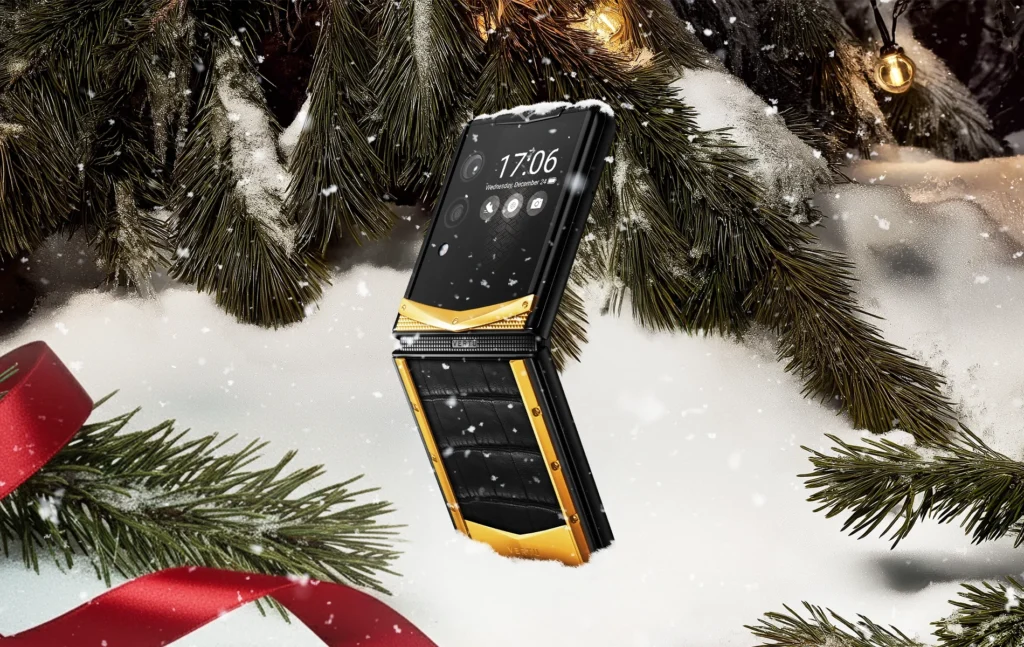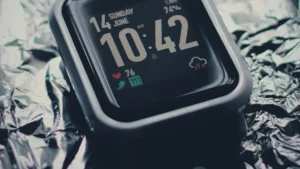
The future of mobile technology is here, and it bends, folds, and unfolds right in your hand. But with this groundbreaking innovation comes a crucial question: how do these futuristic devices stand up to the rigors of daily life? While the spotlight often shines on the intricate hinge mechanisms, true long-term usability of a Durable Fold Phone extends far beyond this single component.
If you're captivated by the allure of foldable screens and are wondering about their resilience, or if you're already a proud owner seeking to maximize your investment, this comprehensive guide is for you. We'll delve deep into what makes a fold phone truly durable, exploring the often-overlooked aspects of screen integrity, frame strength, and internal component protection. Prepare to gain practical insights that will demystify fold phone durability and empower you to make informed decisions for years of seamless enjoyment.
The Evolving Landscape of Foldable Screen Durability
The most visually striking aspect of a foldable phone is, of course, its screen. Early iterations of foldable technology often raised concerns about the fragility of these flexible displays. However, significant advancements have been made to enhance their resilience, making the Durable Fold Phone a more viable option for everyday use.
The evolution of foldable screen technology has primarily focused on two key areas: materials and protective layers. Initially, many foldable screens relied heavily on plastic or polymer layers, which were susceptible to scratches and could develop visible creases over time. While these materials offered flexibility, they lacked the robust feel and scratch resistance of traditional glass displays.
The introduction of Ultra-Thin Glass (UTG) marked a significant leap forward. UTG is a specialized type of glass that is incredibly thin and flexible, allowing it to bend without shattering. When combined with advanced adhesive technologies and protective coatings, UTG offers a more premium feel and improved scratch resistance compared to plastic alternatives. However, it's important to note that UTG is still more delicate than the hardened glass found on conventional smartphones.
Furthermore, manufacturers are employing sophisticated screen protectors that are either integrated into the display or designed to be applied by the user. These protectors are engineered to absorb impact and prevent minor abrasions. The design of the display itself also plays a role; some foldable phones feature a “waterdrop” hinge that allows the screen to fold into a gentler curve, minimizing stress on the display and reducing the prominence of the crease.
When considering a Durable Fold Phone, pay attention to:
- Screen Material: Look for devices that utilize UTG or advanced polymer composites with enhanced scratch resistance.
- Crease Minimization: While a crease may be unavoidable, some designs are better at minimizing its visibility and impact on user experience.
- Protective Coatings: The presence of oleophobic and anti-reflective coatings can improve the feel and reduce smudges, contributing to a more durable perception.
The ongoing innovation in screen technology is steadily bridging the gap between foldable convenience and the durability expected from modern smartphones, paving the way for truly Durable Fold Phone experiences.
Beyond the Screen: Hinge Engineering and Frame Integrity
While the foldable screen is a marvel of engineering, the hinge mechanism is the heart of a foldable phone's functionality and a critical determinant of its long-term durability. A robust hinge ensures smooth operation, protects the internal components, and contributes significantly to the overall longevity of a Durable Fold Phone.
The complexity of a foldable hinge lies in its ability to withstand thousands of opening and closing cycles without degradation. Manufacturers invest heavily in developing sophisticated hinge designs that incorporate:
- Advanced Materials: High-strength alloys, precision-engineered gears, and durable lubricants are used to ensure smooth movement and prevent wear.
- Internal Bracing and Support: The hinge often contains internal structures that support the screen and prevent excessive flexing or pressure points.
- Dust and Debris Mitigation: One of the primary challenges for hinges is preventing the ingress of dust and small particles, which can impede movement and cause damage. Many modern hinges incorporate brush-like mechanisms or seals to keep contaminants out.
- Multiple Pivot Points: Some advanced hinges utilize multiple pivot points to achieve a more natural folding motion and distribute stress evenly.
The durability of the hinge is often quantified by the number of folds it is rated to withstand. While specifications vary, a Durable Fold Phone should ideally be tested for at least 200,000 folds, which translates to hundreds of folds per day for several years.
Equally important is the frame integrity of the foldable device. The frame acts as the structural backbone, housing the internal components and providing a secure housing for the hinge and display. For a Durable Fold Phone, this typically involves:
- Robust Materials: Frames are often constructed from aircraft-grade aluminum or reinforced alloys, offering a balance of strength and light weight.
- Internal Reinforcement: The internal structure of the frame is designed to absorb shock and protect sensitive components like the battery, motherboard, and cameras.
- Sealing and Protection: The frame plays a role in the overall water and dust resistance (IP rating) of the device. A well-sealed frame prevents moisture and particulate matter from reaching internal electronics.
When evaluating a Durable Fold Phone, consider the following aspects related to its hinge and frame:
- Hinge Design: Look for details about the hinge's engineering, materials, and tested fold count.
- Frame Construction: Inquire about the materials used for the frame and any specific reinforcement features.
- Water and Dust Resistance: A higher IP rating (e.g., IPX4 or higher) indicates better protection against environmental elements.
By focusing on these critical components beyond just the screen, manufacturers are creating Durable Fold Phone models that are built to last.
Practical Considerations for Enhancing Fold Phone Durability
Owning a Durable Fold Phone is an exciting prospect, but maximizing its lifespan requires a proactive approach to care and usage. While manufacturers have made significant strides in durability, understanding and implementing best practices can prevent premature wear and tear and ensure your device remains in optimal condition for years to come.
Handling and Usage Habits
The unique form factor of foldable phones necessitates slightly different handling habits compared to traditional smartphones.
- Gentle Folding and Unfolding: Avoid forcing the device open or closed. Allow the hinge mechanism to operate smoothly. Do not press down on the screen or hinge with excessive force.
- Avoid Sharp Objects: Keep the screen away from keys, coins, or other sharp objects that could potentially scratch the display, even with protective layers.
- Mindful Placement: When placing the phone down, be mindful of the surface. Avoid dropping it on hard or uneven surfaces.
- Screen Protection: While many foldable screens have improved, consider using a high-quality screen protector designed specifically for your model. This adds an extra layer of defense against minor scratches and scuffs.
- Protective Cases: Invest in a case designed for your specific foldable phone model. These cases not only protect against drops but can also offer added grip and prevent accidental folding or unfolding.
Environmental Protection and Maintenance
Exposure to environmental factors can significantly impact the longevity of any electronic device, and foldable phones are no exception.
- Water and Dust Resistance: While many Durable Fold Phone models offer some level of water and dust resistance (check the IP rating), it's crucial to understand its limitations. Avoid submerging the device unless explicitly stated as waterproof. Clean any visible dust or debris from the hinge area gently with a soft brush or compressed air.
- Temperature Extremes: Avoid exposing your foldable phone to extreme heat or cold, as this can affect battery performance and potentially damage internal components or the display.
- Charging Habits: Use the manufacturer-recommended charger and cable. Avoid overcharging the device for extended periods.
Software and Updates
Keeping your device's software up-to-date is not just about new features; it's also crucial for maintaining optimal performance and durability.
- Regular Software Updates: Manufacturers often release software updates that include optimizations for the display, hinge, and overall system performance. These updates can address minor bugs and improve the user experience, contributing to the device's longevity.
- App Compatibility: Ensure that the apps you use are optimized for foldable displays. While most major apps are, some older or niche applications might not render correctly, potentially leading to a less than optimal user experience.
By integrating these practical considerations into your daily routine, you can significantly enhance the durability and enjoyment of your Durable Fold Phone.
FAQ (Frequently Asked Questions)
Q1: Are foldable phone screens as durable as traditional smartphone screens?
A1: While foldable phone screens have made significant advancements, particularly with the introduction of Ultra-Thin Glass (UTG), they are generally not as durable as the hardened glass found on traditional smartphones. They are more susceptible to scratches and can develop creases over time. However, manufacturers are continuously improving their resilience, and many Durable Fold Phone models offer robust protection for everyday use.
Q2: How many times can a foldable phone be folded before it breaks?
A2: The folding durability of a foldable phone is typically rated by the number of folds the hinge mechanism can withstand. Many modern Durable Fold Phone models are tested for at least 200,000 folds, which is equivalent to hundreds of folds per day for several years. However, this is a laboratory test, and actual lifespan can vary based on usage and care.
Q3: Can foldable phones withstand water and dust exposure?
A3: Many newer foldable phones, especially those marketed as Durable Fold Phone models, offer some level of water and dust resistance, often indicated by an IP rating (e.g., IPX4 or IPX8). However, the complex hinge mechanism can be a challenge for achieving high levels of protection. It's crucial to check the specific IP rating of your device and understand its limitations; they are generally not designed for submersion in water.
Q4: What are the most common ways to damage a foldable phone?
A4: The most common ways to damage a foldable phone include scratching the flexible display with sharp objects, applying excessive force to the screen or hinge, dropping the device on hard surfaces, and exposing it to excessive dust or moisture that can impede the hinge mechanism. Improper handling during folding and unfolding can also lead to premature wear.
خاتمة
The journey of the foldable phone from a novel concept to a practical device has been marked by rapid innovation, particularly in enhancing its durability. While the intricate hinge mechanism often steals the spotlight, true long-term usability of a Durable Fold Phone hinges on a holistic approach that encompasses screen resilience, robust frame engineering, and meticulous user care.
We've explored the evolution of foldable screen technology, from early polymer displays to the more advanced Ultra-Thin Glass (UTG), and highlighted the critical role of hinge design in ensuring thousands of smooth, reliable folds. Furthermore, we've emphasized the importance of frame integrity and practical usage habits in safeguarding your investment. By understanding these multifaceted aspects, you can confidently embrace the future of mobile technology.
Ready to experience the innovation of foldable devices without compromising on longevity? Explore the latest models of Durable Fold Phone technology today and discover a device that bends to your needs, not the other way around. Invest in a foldable phone that’s built for the long haul.








